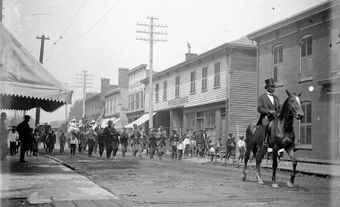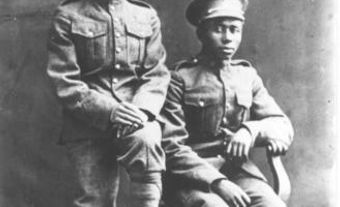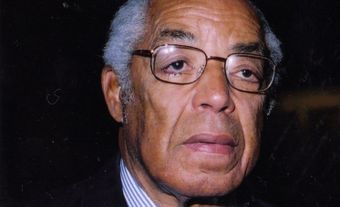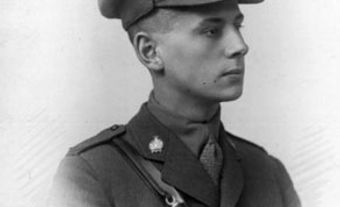Dresden, Ontario, population centre, population 2,401 (2021 census), 2,451 (2016 census). Incorporated as a town in 1882, Dresden lost this status in 1998 after it merged into the new municipality of Chatham-Kent. Dresden is an agricultural community located in southwestern Ontario on the Sydenham River. The Dawn Settlement, near Dresden, was one of the final destinations of the Underground Railroad. In the mid-20th century, some businesses in Dresden became infamous for refusing to serve Black Canadians (see Racial Segregation of Black People).
Settlement and Development
Jared Lindsley first settled in the area in 1825. In 1846, Daniel van Allen purchased land and began to develop the area of present-day Dresden. The area grew slowly as a lumber centre until the 1860s, when an influx of settlers arrived to inhabit the cleared land. By 1872, Dresden reached a sufficient size to be incorporated as a village; 10 years later, it received town status. With the trees cut down, the town evolved into a local agricultural service centre. (See also Agriculture in Canada.)
Today, the two largest industries are the manufacturing of automotive parts and food processing, which utilizes the local tomato harvest. (See also Manufacturing in Canada; Automotive Industry.)
Underground Railroad
In 1841, Reverend Josiah Henson, a former enslaved person from the United States, settled near Dresden. He helped establish the Dawn Settlement — a safe area for Black Refugees fleeing enslavement in the United States (see also Refugees to Canada; Black Enslavement in Canada). Henson also helped found the British American Institute, a vocational school for the community living at the Dawn Settlement. For many Black Refugees, the area of Dresden was the final destination on the Underground Railroad. ( See also Black Canadians; Black History in Canada until 1900.)

Josiah Henson is reputed to have been the model for Uncle Tom in Harriet Beecher Stowe's novel Uncle Tom's Cabin (1852). Henson’s two-storey house, built around 1842, is now part of the Uncle Tom's Cabin Historic Site in Dresden.
Human Rights
In the mid-20th century, Dresden received media attention as several civil rights activists fought against racial discrimination (see Prejudice and Discrimination in Canada; Racism). At the time, many Dresden restaurants, cafés and barbershops refused to serve Black clients (see Racial Segregation of Black People in Canada). To end this discrimination, Hugh Burnett and members of Dresden’s Black community organized under the National Unity Association (NUA). The NUA pressured the town to ban racial discrimination in local businesses. In response, a referendum was organized in 1949. Voters were asked if it should be illegal for restaurants to refuse serving people on the basis of their race, colour or religion. The anti-discrimination bylaw was rejected by a margin of five to one.
The NUA and Burnett continued to advocate against segregation. Their advocacy led to Ontario Premier Leslie Frost’s government to introduce the Fair Employment Practices Act (1951), which prohibited discrimination in employment and the Fair Accommodation Practices Act (1954), which made it illegal to deny public services and housing to people on the basis of their race, religion or ethnicity. Nonetheless, due to lax enforcement, some restaurants in Dresden continued to refuse serving Black Canadians. Activists like Burnett, Bromley Armstrong and Ruth Lor Malloy drew attention to the issue by staging sit-ins to “test” businesses’ compliance with the law. The activists also invited journalists to report on their efforts. A “test” at Kay’s Café in 1954 received significant media coverage when the group was refused service. These “tests” contributed towards the successful establishment of human rights legislation in Canada. (See also Black History in Canada: 1900-1960.)
In 2010, the Ontario Heritage Trust unveiled a plaque to commemorate the activism of Hugh Burnett and the National Unity Association.

 Share on Facebook
Share on Facebook Share on X
Share on X Share by Email
Share by Email Share on Google Classroom
Share on Google Classroom















